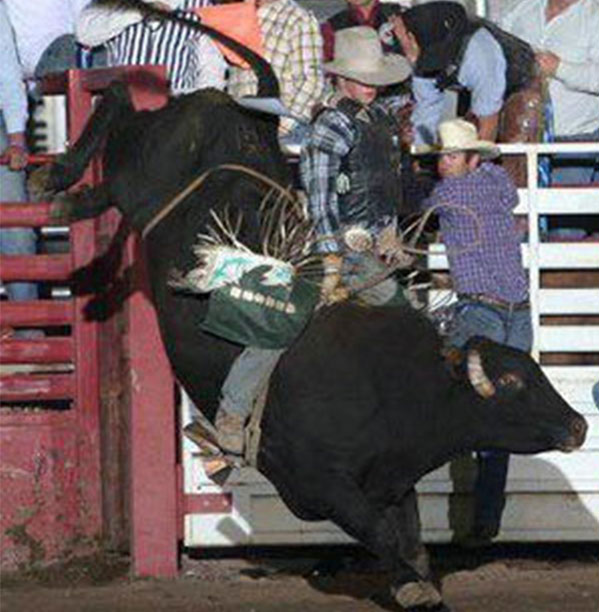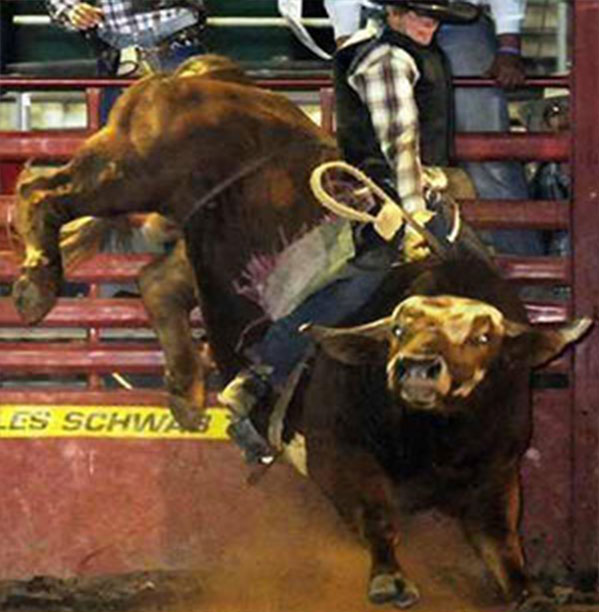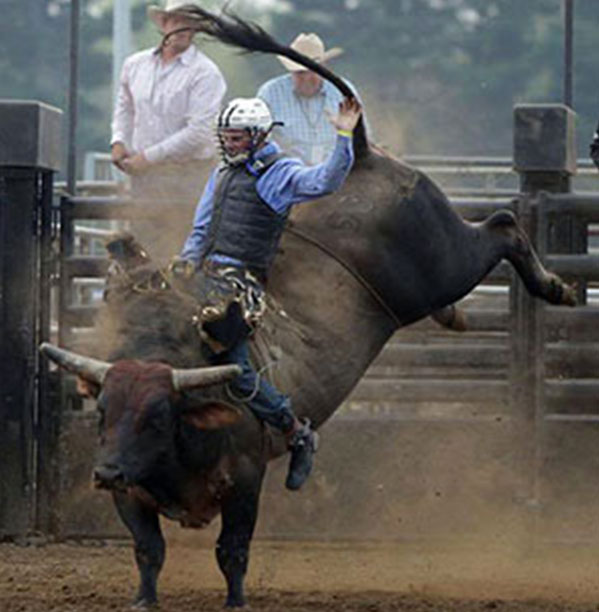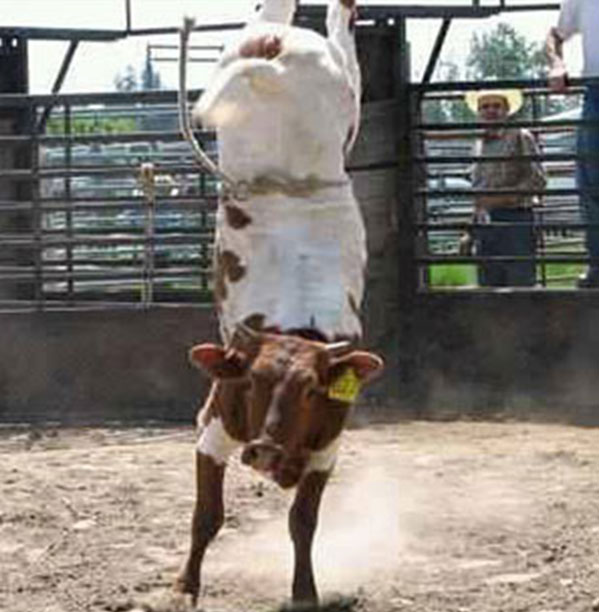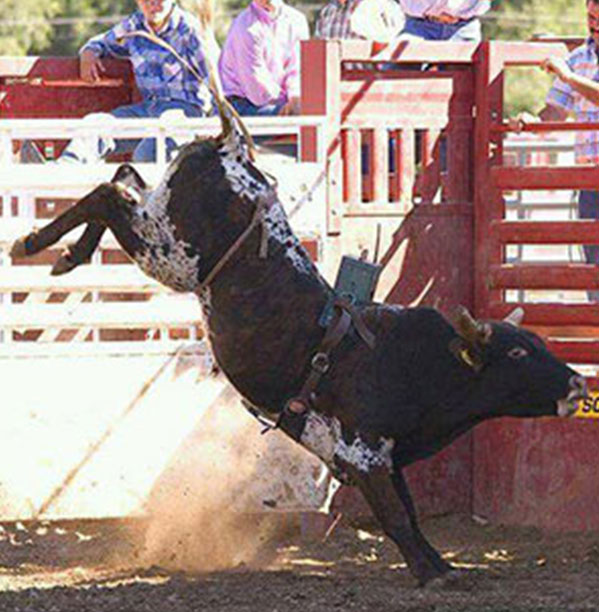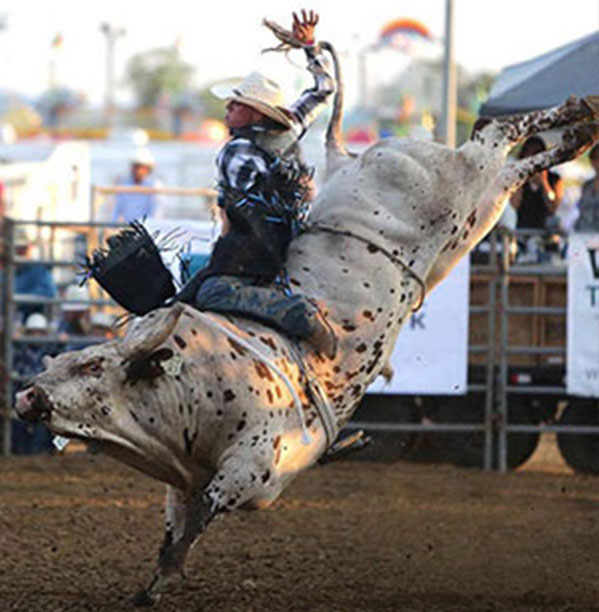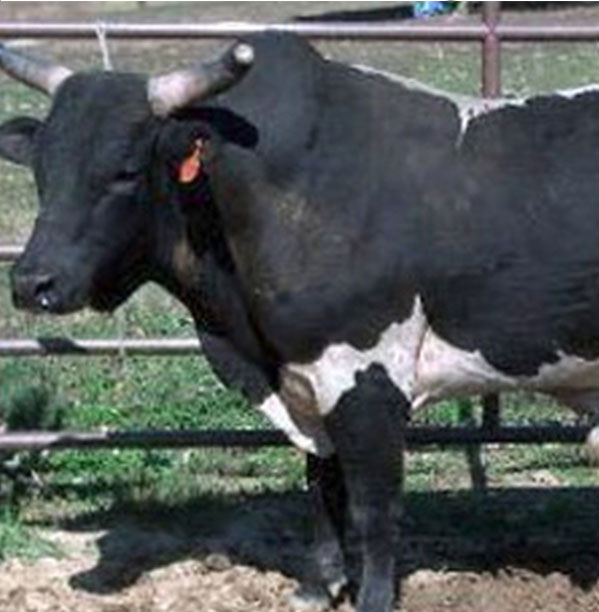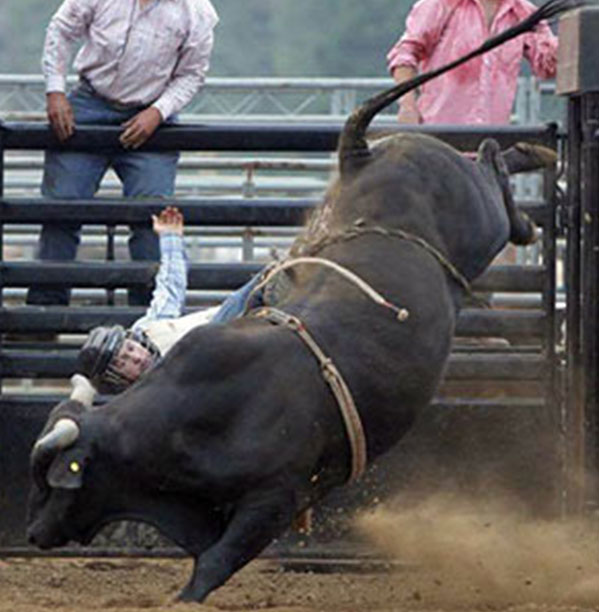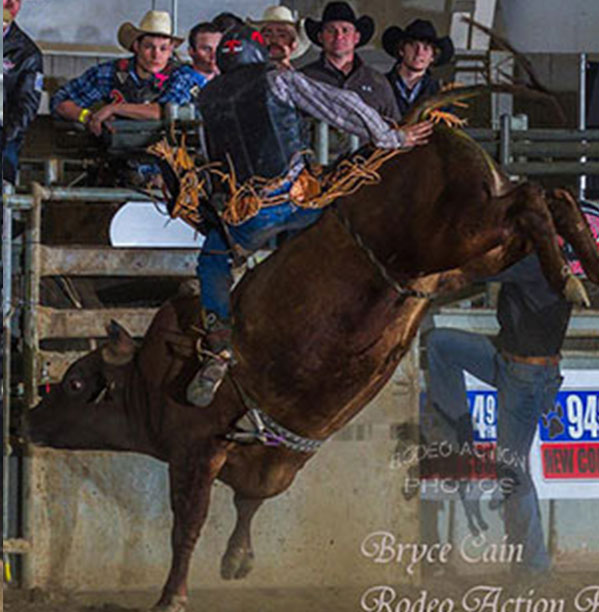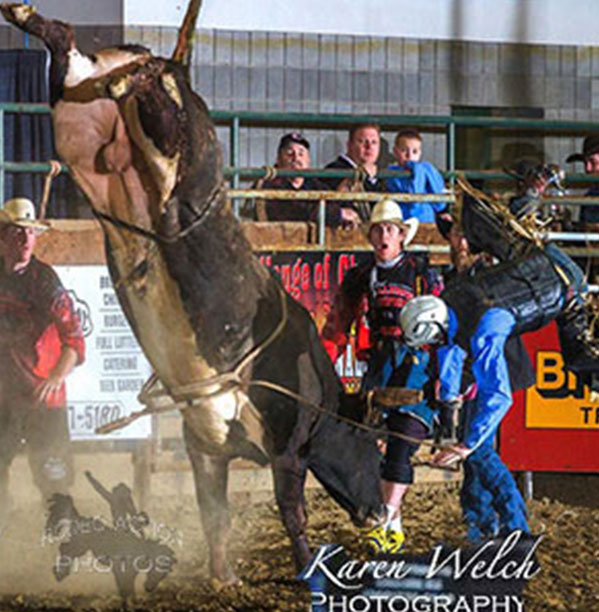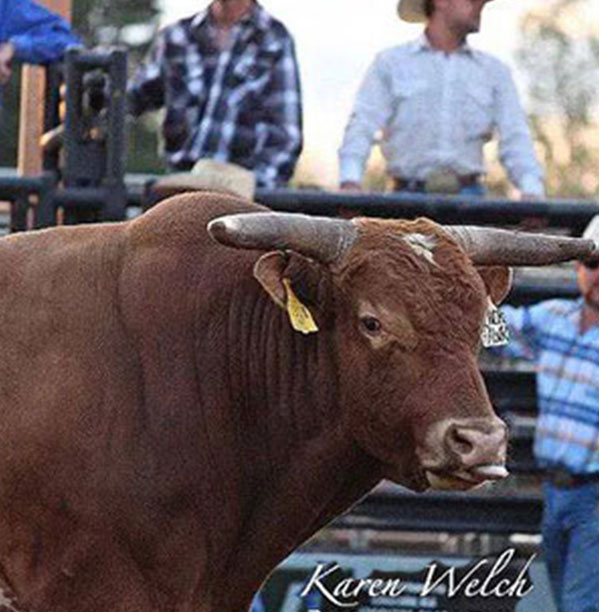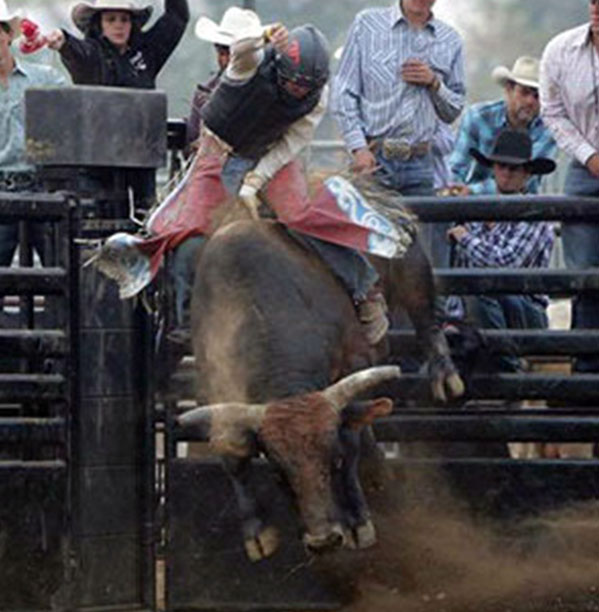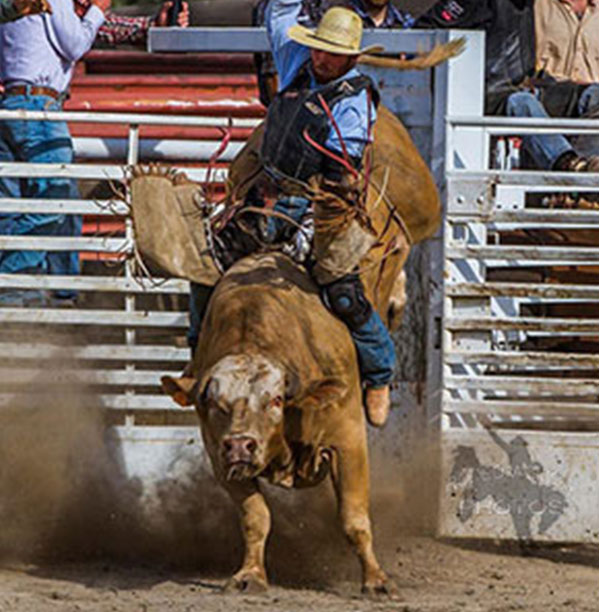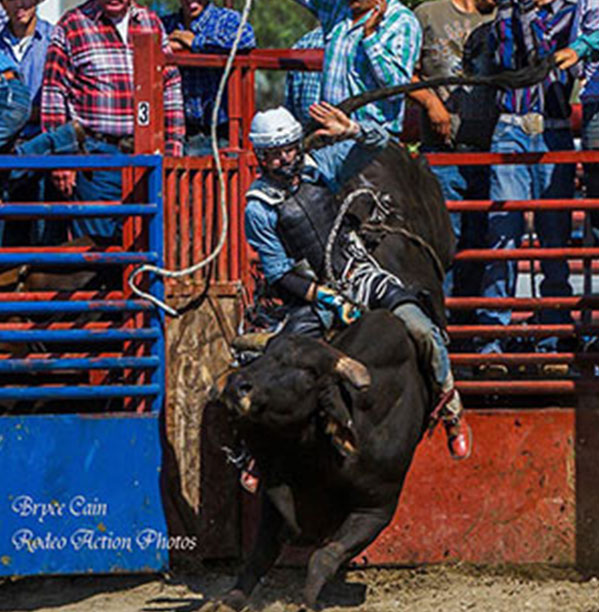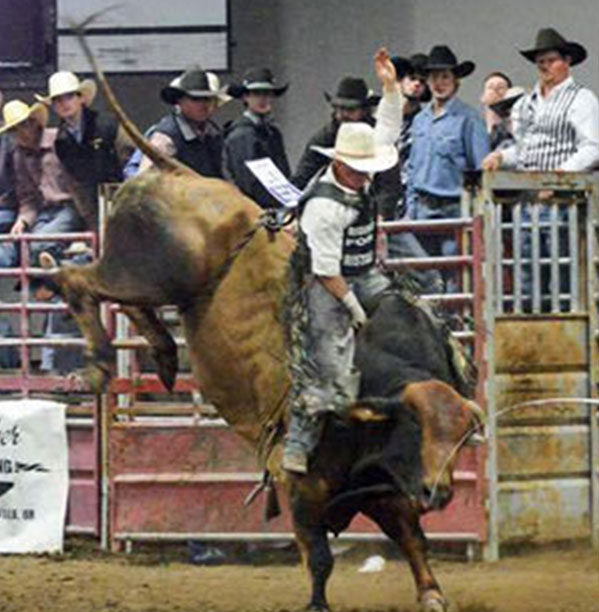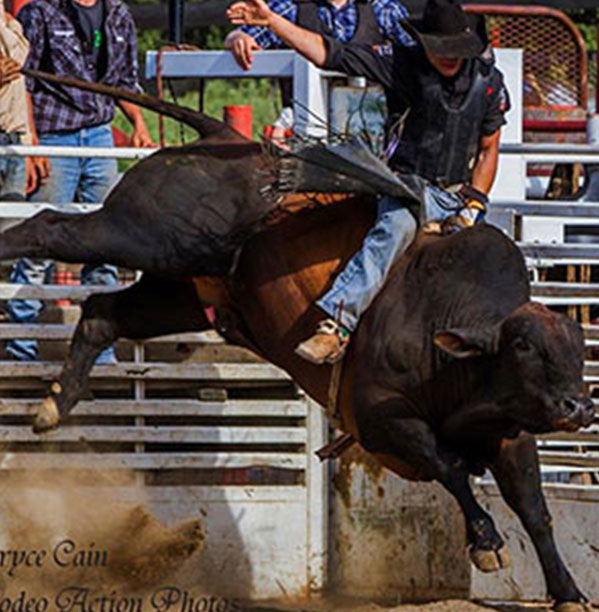The Bucking Bull
By
Nikki Stephenson Feb. 08, 2018
The American Bucking Bull is a specific breed
Bred specifically to compete, the bulls that compete in the PBR are products of an elite breeding program that breed for genetically superior bucking. A recognized breed of cattle, thanks to the PBR and the ABBI (American Bucking Bull, Inc.), there are 200,000+ animals alive with bucking bull genetics. Their lineage, like racing horses, can be traced a long way.
The bulls know they are competing, and know the drill
Respect these bucking bulls, for not only are they rivals, but seasoned professional athletes. When they start training at age 1, it is a constant repetition of arena sounds, being loaded onto a truck, getting loaded into the chute and learning what it’s like to be at a highly-attended event. Not all bulls will buck – we are told some just take to it right away. By age 2, they get loaded weight on their backs called a “bucking dummy,†which is remotely operated –this is when they know the weight will only be on them for 8 seconds. They know when they get to the arena, it’s their time to shine and get amped just like riders. By the time they reach the PBR, they know the sounds, lights, the truck, the whole enchilada. By the end of it, they know they’ll go back to food and water.
They have only one ride the entire event
One and done, bucking bulls have only one ride the entire night.
Agitation is not used in any way to get them to buck
Bucking is an instinct to these specifically-bred animals. For a ride, bulls have a flank strap encircling their flanks, which is in front of their hips. This creates a less erratic bucking performance. Spurs are used but are required to be dull (riders actually use spurs to get a grip on the animal) and do not scratch the animal. Bull’s skin is 7 times thicker than human skin!
Bucking Chutes (holding pens prior to a ride) were changed specifically to decrease injuries to the bulls’ legs
PBR was in charge of creating a redesign of the traditional bucking chute to improve rider and bull safety. Since the redesign, injuries to bulls have been completely eliminated.
They are transported with the utmost care
The animals are only allowed to travel a maximum of 10 hours per day in trailers with air-ride suspension to prevent injury before leading them to rest and graze for 12-14 hours. While in transport, these bulls are in 6-10 inches of soft sawdust
They eat like kings
Bulls are fed 15 pounds of high quality hay every day, and often times get B-12 complex vitamin shots and nutritional supplements to keep them healthy, happy and at the top of their game. The handlers make sure the bulls are hydrated, well fed and happy before any event.
There is a veterinarian on call for each stock contractor at the event
There is always a vet on site or on call. If there is any issue health-wise with an animal at the event, the veterinarian is notified immediately. This is ethically done and has a paper trail, health papers are required for all animals arriving at competition. They are inspected with great care prior to competition.
The bulls get acupuncture!
We’re not sure they appreciate acupuncture as much as we do, but many of the bulls get top notch chiropractic care and receive acupuncture to help them stay in top health physically, thus emotionally.
Retirement sounds like a solid deal
The bulls competing in PBR on February 24 are 5-6 years old and more mature. We are told bulls usually don’t mature until they are 3 or 4. As these bulls can live into their teens, with bulls still bucking well past age 10. Once they retire from competition, they become sires of the bucking bull breed and make more bucking babies.
Retrieved 10-8-2020 -
About Bucking Bulls
